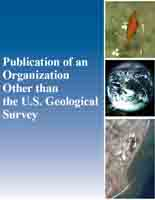Informing management of recovering predators and their prey with ecological diffusion models
Links
- More information: Publisher Index Page (via DOI)
- Download citation as: RIS | Dublin Core
Abstract
The reintroduction and recovery of predators can be ecologically beneficial as well as socially and economically controversial. However, the growth and expansion of predator populations, and thus their ecological, social, and economic impacts, are not static but rather they vary in space and time. We propose a spatiotemporal statistical modeling framework based on ecological diffusion to better inform the ecology and management of recovering predators and their prey. We demonstrate its utility by applying it to a recovering sea otter (Enhydra lutris) population in Southeast Alaska, where sea otters were reintroduced in the late 1960s and have exhibited unprecedented population growth. Estimated parameters yield inferences about movement and population ecology, and our approach provides useful derived quantities, such as local abundance and carrying capacity as well as a quantity we term the equilibrium differential. We used our model to examine how density dependence and carrying capacity of sea otters vary spatially across a region. The diffusion modeling approach we present can be generalized for use in other instances of (re)colonization across taxa to inform management and conservation efforts.
Study Area
| Publication type | Article |
|---|---|
| Publication Subtype | Journal Article |
| Title | Informing management of recovering predators and their prey with ecological diffusion models |
| Series title | Frontiers in Ecology and the Environment |
| DOI | 10.1002/fee.2673 |
| Volume | 21 |
| Issue | 10 |
| Publication Date | September 05, 2023 |
| Year Published | 2023 |
| Language | English |
| Publisher | Ecological Society of America |
| Contributing office(s) | Alaska Science Center Ecosystems |
| Description | 10 p. |
| First page | 479 |
| Last page | 488 |
| Country | United States |
| State | Alaska |


